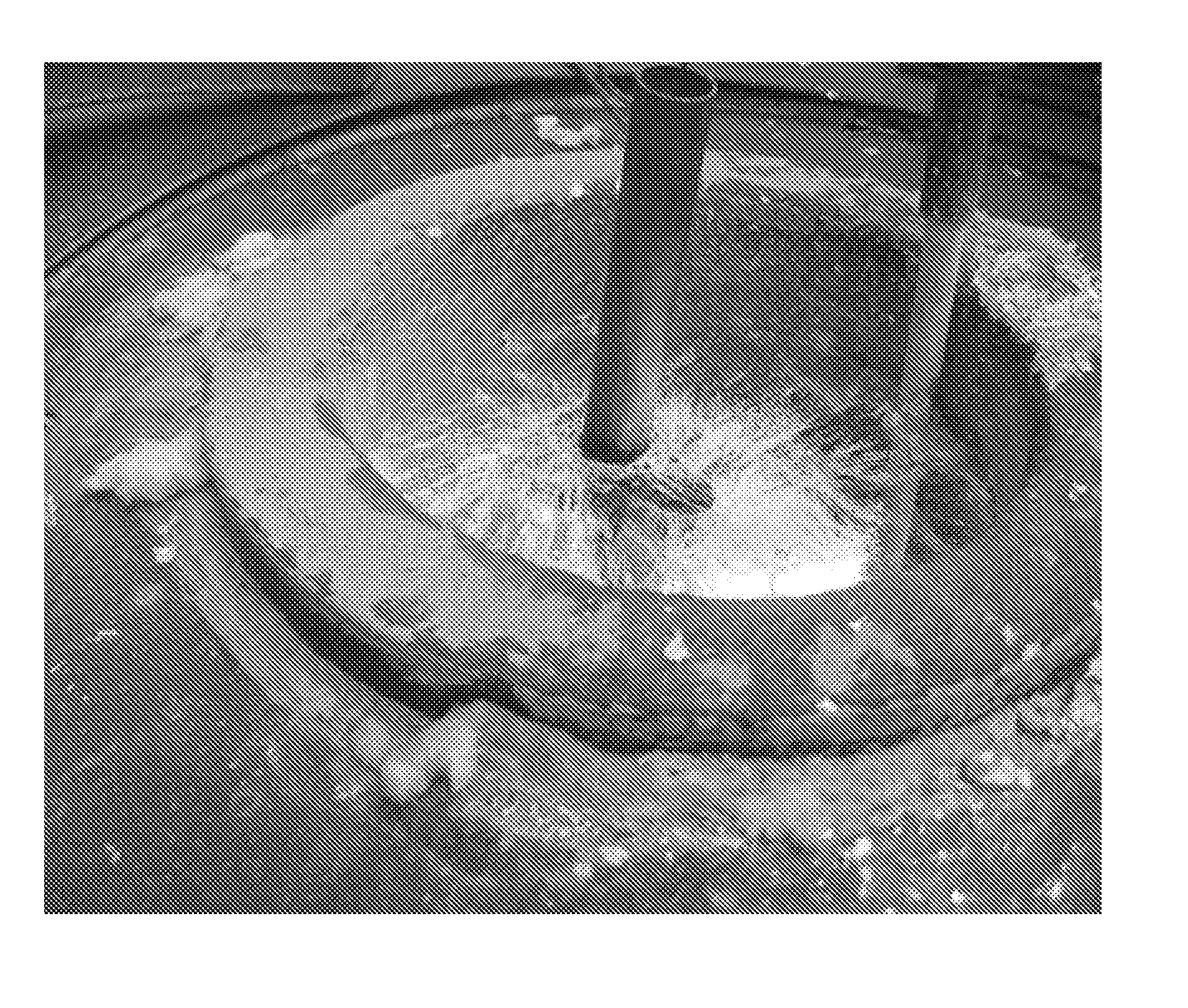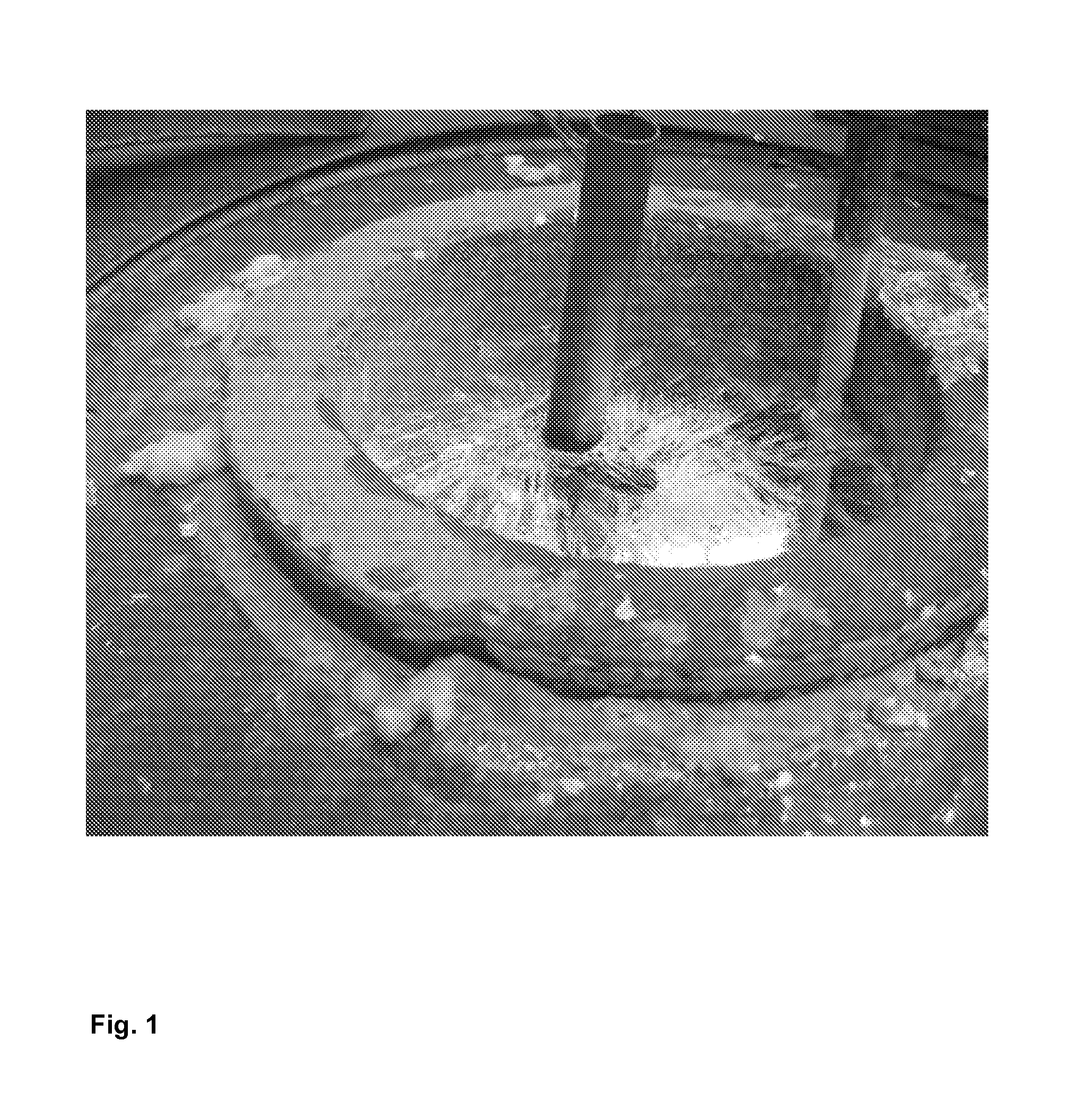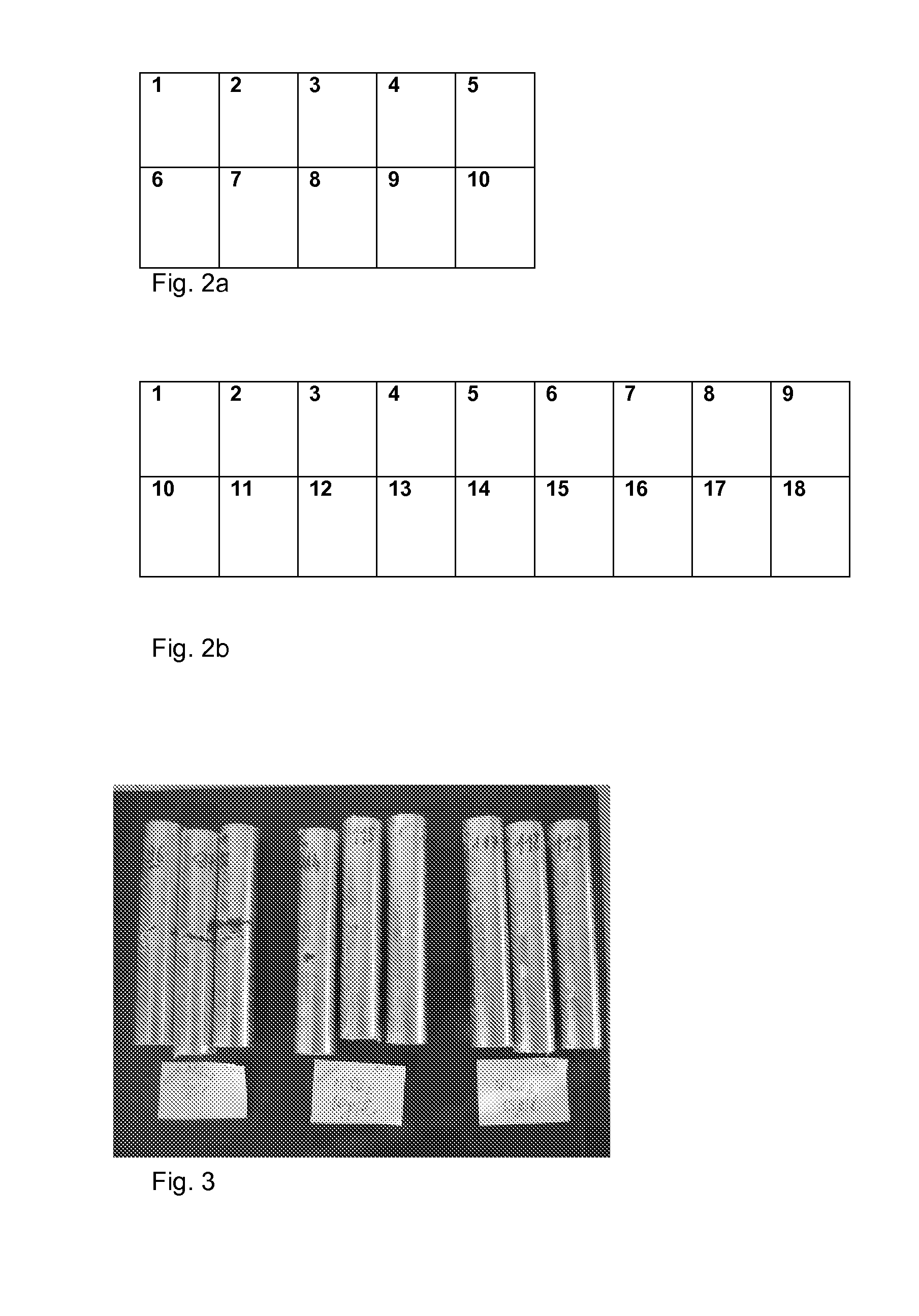Flux and fluxing bath for hot dip galvanization, process for the hot dip galvanization of an iron or steel article
a technology of flux bath and hot dip galvanization, which is applied in the direction of liquid surface applicators, coatings, metallic material coating processes, etc., can solve the problems of inability to meet the requirements of hot dip galvanizing
- Summary
- Abstract
- Description
- Claims
- Application Information
AI Technical Summary
Benefits of technology
Problems solved by technology
Method used
Image
Examples
example 1
Evaluation of the Flux Resistance when a Piece is Dipped Very Slowly or the Dipping Procedure is Interrupted
[0055]In order to observe this phenomenon the tests on tubes from the company Baltimore Aircoil with a length of 200 mm (Diameter=25 mm, Thickness=1.5 mm) have been made. Three tubes were galvanized for each test condition in order to get a statistically consistent result. All these tubes have been prepared for the galvanization according the following pre-treatment steps:[0056]Alkaline degreasing during 10 min at 60° C.[0057]Rinsing[0058]Pickling for 30 min at 30° C. in a bath containing 95 g / l HCl and 125 g / l FeCl2 [0059]Rinsing (in 2 baths in cascade)[0060]Flux (see table no 1 here under): for 2 minutes with a fluxbath at 50° C. A wetting agent (Netzer 4 from the company Lutter Galvanotechnik GmbH) is added to the flux in order to wet the steel better and to make a more homogeneous flux layer on it.[0061]Drying 14 hours in a dryer with air at 120° C. with natural air convec...
example no 2
[0071]These tests were also achieved on tubes from the company Baltimore Aircoil with a length of 200 mm (Diameter=25 mm, Thickness=1.5 mm). Three tubes were galvanized for each test condition in order to get a statistically consistent result. All these tubes have been prepared for the galvanization according the following pre-treatment steps:[0072]Alkaline degreasing during 10 min at 60° C.[0073]Rinsing[0074]Pickling for 30 min at 30° C. in a bath containing 95 WI HCI and 125 WI FeCl2[0075]Rinsing (in 2 baths in cascade)[0076]Flux (see table no 3 here under): for 2 minutes with a fluxbath at 50° C. A wetting agent (Netzer 4 from the company Lutter Galvanotechnik GmbH) is added to the flux in order to wet the steel better and to achieve a more homogeneous flux layer on it.[0077]Drying 14 hours in a dryer with air at 120° C. with natural air convection (no ventilation: frequency controller on 0 Hz)[0078]Zinc alloy in % weight: 0.33 Sn—0.03 Ni—0.086 Bi—0.05 Al—0.022 Fe—0 Pb, the remai...
example no 3
[0085]In this test, the influence of the presence of MnCl2, NiCl2 and the combination of both MnCl2+NiCl2 in the flux have been tested. Identical tubes from the company Baltimore as in the previous examples were used in order to evaluate the resistance of these fluxes.
[0086]The pre-treatment procedure, residence time in the flux, the dryer and the zinc bath are exactly identical as those of example 2. The zinc bath composition is also identical as the one of example no 2.
TABLE 5Composition of the flux tested in example n[hu o [l 3MnCl2NiCl2Netzerwt % related wt % relatedpHConc.4to the total to the totalAt Nr.fluxFlux typeg / lml / lsalt contentsalt content60° C.31Double salt + Ni545300.9332Double salt + Ni540301.82318Double salt + Ni535302.7333Double salt + Mn54530.90334Double salt + Mn54031.820329Double salt + Mn53532.70329bisDouble salt + Mn53502.70335Double salt + Mn + Ni54030.90.9336Double salt + Mn + Ni53531.820.9337Double salt + Mn + Ni53032.70.9338Double salt + Mn + Ni53031.821.8...
PUM
| Property | Measurement | Unit |
|---|---|---|
| temperature | aaaaa | aaaaa |
| temperature | aaaaa | aaaaa |
| temperature | aaaaa | aaaaa |
Abstract
Description
Claims
Application Information
 Login to View More
Login to View More - R&D
- Intellectual Property
- Life Sciences
- Materials
- Tech Scout
- Unparalleled Data Quality
- Higher Quality Content
- 60% Fewer Hallucinations
Browse by: Latest US Patents, China's latest patents, Technical Efficacy Thesaurus, Application Domain, Technology Topic, Popular Technical Reports.
© 2025 PatSnap. All rights reserved.Legal|Privacy policy|Modern Slavery Act Transparency Statement|Sitemap|About US| Contact US: help@patsnap.com



